Reading Fluency: The bridge between word recognition and comprehension
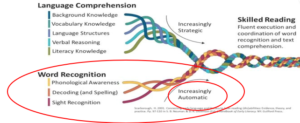
What is Reading Fluency
Fluency involves reading expressively with sufficient accuracy and speed to support comprehension. It is one of the ‘Big 6’ components of learning to read. All high-quality literacy programs should include this component.
Fluency requires accurate, automatic, and expressive word reading. According to the National Reading Panel, students who are low in fluency may have difficulty getting the meaning of what they are reading (NRP 2000).
When we look at Scarborough’s Reading Rope (2021), Fluency is considered the product of developing word recognition skills to a level of automaticity which enables the reader to lift the words from the page and shift the cognitive load to comprehending or making meaning from text.
Dr Deslea Konza defines fluency as the ability to read text accurately, quickly and with expression. Listen to Dr Konza explain why Fluency is critical to reading comprehension
https://youtu.be/Rw4lOFc3OD0 SA-DECS-Fluency-doc.pdf
Dr Tim Rasinski explains fluency as ‘reading with and for meaning’. He also proposed that due to confusion regarding the components and complexity of fluency, that… “automaticity has somehow morphed into making kids read fast. We measure automaticity by speed of reading. So, we try to improve reading by getting kids to read faster. And of course, that doesn’t work at all. We end up with fast readers, but not very good readers.” (Tim Rasinski, Effective Fluency Instruction with Tim Rasinski, Episode 62, Melissa & Lori love literacy Podcast 2021). In this podcast Tim talks about effective fluency instruction and how fluency instruction should be included in upper primary and secondary literacy instruction. Listen to Dr Rasinski via the following podcast link.
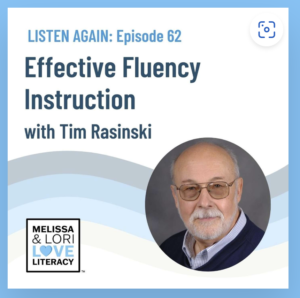
Fluency is made up of 3 core components… So what are they?
Accuracy (word decoding)
Accuracy means reading words on the page correctly. Students need to have strong foundational word recognition skills, read at least 95% of the words accurately, and for younger developing readers it should be 98% (International Literacy Association, 2018).
Rate (Automaticity) is the speed of word recognition. Reading rate or pace, will be directly affected by the student’s ability to recognise words automatically. The significance of achieving automaticity is that readers can devote their limited cognitive resources to the important task of comprehending the text. If students are working hard to decode words, their reading rate will be slow. However, reading quickly does not necessarily make a fluent reader. If students read too fast, they may miss the meaning of the text, which can impact their ability to read with prosody and intonation… Rate is usually recorded as words read per minute (WRPM). Students who read at an appropriate rate, sounds natural, as if they are talking.
Prosody, the rhythms and patterns of sound in spoken language, can also be described as interpretive and meaningful reading. Reading with prosody requires chunking words into phrases, paying attention to punctuation, pausing at appropriate points, emphasising key words, reading with expression, and varying tone and rhythm. The application of these skills indicates whether the reader is making sense of the text.
Here are some more links to literacy experts sharing their knowledge and research on reading fluency:
Why Reading Teachers Should Slow Down and Focus on Accuracy | Reading Rockets https://youtu.be/4L5q0Y8hukU Louisa Moats
Basics: Fluency | Reading Rockets
Fluency & fluency_-_backgroundinformation.pdf NSW Govt
Oral_Reading_Fluency_Oct2023.pdf VIC Govt.
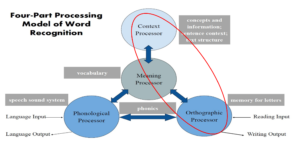
Listen to Dr Jan Hasbrouck, coauthor author of Reading Fluency and The Ladder of Reading & Writing explain the complexities of reading fluency and its role in the development of the skilled reader.
https://youtu.be/CGzQ97hh3lU Dr Jan Hasbrouck LDA
Oral_Reading_Fluency_Oct2023.pdf
Why is fluency so important?
Research has proven that there is a strong correlation between reading fluency and reading comprehension.
Dr Rasinski described students that were fluent readers as those that were able use their new-found cognitive “energy” to interpret what they were reading.
Students who have not yet developed fluency read slowly, word by word, often in a monotone manner, and can be described as bumpy or choppy readers. As previously discussed, they may also read too fast and are not able to demonstrate their ability to read with expressively.
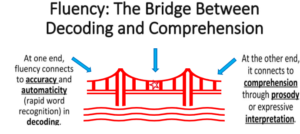
Oral reading fluency acts as the link or bridge between word reading and reading comprehension. Reading fluency difficulties have been found to be the single biggest concern for more than 90% of children with below age-appropriate reading comprehension (Hempenstall, 2016).
(PDF) Read About It: Scientific Evidence for Effective Teaching of Reading
Hempenstall, Kerry. (2016). Read About It: Scientific Evidence for Effective Teaching of Reading.
Automaticity of Word Recognition
So, let’s conduct a little experiment. We are going to use the chart below to experience automatic word recognition. Do the following in this sequence:
- Name the colours of the print (not the words), as rapidly as possible.
- Now read the words.
- Lastly, compare the time it took to name the colours with the time it took to read the words.
- Which was the easier task? Which took longer? Why?
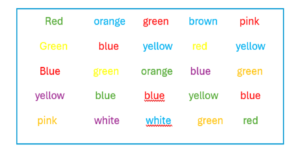
This experiment illustrates that it is not only the speed (rate) that matters but accuracy. Speed is not possible without accuracy. Every time an error is made, meaning can be lost. Students who decode slowly, will have difficulty with comprehending the text (accessing meaning). They have not successfully orthographically mapped the words in the text. This is why it is critical that a student has a 95% or above level of accuracy, so that they can read at the appropriate speed and access meaning from the text, consequently enabling them to shift the cognitive load to apply the syntactic knowledge required to achieve prosody. (Moats & Toman, 2019).
